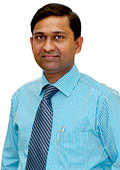|
 All
along only foreigners could play movers and shakers in emerging
markets-buy stocks and exit at will for better opportunities.
If the Emerging Portfolio Fund Research shows that there were
inflows of $23 billion (Rs 96,600 crore) into emerging markets
between January and March 2006 and likewise an outflow of investments
of $1.67 billion (7,014 crore) from the same markets in the January-March
quarter of 2007, an Indian could only shake his head in helplessness
for not participating in this game. All
along only foreigners could play movers and shakers in emerging
markets-buy stocks and exit at will for better opportunities.
If the Emerging Portfolio Fund Research shows that there were
inflows of $23 billion (Rs 96,600 crore) into emerging markets
between January and March 2006 and likewise an outflow of investments
of $1.67 billion (7,014 crore) from the same markets in the January-March
quarter of 2007, an Indian could only shake his head in helplessness
for not participating in this game.
No longer though. The emerging markets have still not lost their
shine and today an Indian can invest comfortably into them from
the confines of his home. Not that he was totally deprived earlier.
It was just that opportunities were lesser in the past.
The Overseas Push
The business of overseas investing started in 2004, but it's
only recently that this asset diversification strategy is getting
the push from different quarters, both regulatory and product
sources like asset management companies. In the latest credit
policy, the Reserve Bank of India (RBI) handed out a further fillip
to the mutual fund industry by increasing the overseas investment
limit from $3 billion to $4 billion to encourage more fund houses
to introduce international funds. RBI even increased the individual
limits of investing abroad from $50,000 to $100,000, although
it does not cover investing in rupee mutual funds, but only direct
buying of equities or overseas assets by an individual.
When you examine an international fund, it's
actually not much different from a normal mutual fund. A normal
fund is rupee denominated as it accepts investments in the form
of rupees and the regular net asset values are also calculated
in Indian rupees. But international funds go one step ahead. They
repatriate the same rupees overseas, which are then invested in,
say, one single overseas fund or in a basket of international
funds or fund managers may directly purchase overseas stocks.
Likewise, investments by you in international funds are made in
rupees and redeemed in rupees. Yet, you get a bona fide global
diversification.
One reason you can consider a global mutual
fund is because it provides a hedging mechanism of a different
kind-a currency hedge. If the Indian environment gets uncertain,
the Indian rupee tends to weaken and, therefore, if you are invested
in overseas assets, you get to hedge your rupee risk. "Diversification
improves the investor's overall portfolio risk return characteristics.
It is not a case of global investing versus investing in India,
but a tool to reduce risk, besides taking exposure to the global
economy,'' says Rajat Jain, Chief Investment Officer, Principal
PNB Asset Management. What's more, investors can expect opportunities
to grab global assets as funds like Kotak Mutual Fund have already
joined hands with us-based T. Rowe Price to launch a fund that
would invest in Global Emerging Markets Funds.
INTERVIEW:
Ashu Suyash/Country Head/Fidelity Asset Management
"A Fund Manager will Factor in Currency
Risks before Evaluating a Stock" |
 What
is the potential of international funds? What
is the potential of international funds?
We expect investor interest in international funds to
increase over the next few years. However, the 'home country'
bias tends to remain. Even in a developed market like the
us, only about 10 per cent of investor money is invested
outside of the us. India accounts for only half a per cent
of the world's market capitalisation and this presents investors
with many opportunities to bring global diversification
to their portfolios.
You have custom benchmarked to BSE 200 and MSCI. To
what extent do you think you can outperform both?
The Fidelity International Opportunities Fund will have
a custom benchmark created using the bse-200 to the extent
of 65 per cent of the portfolio and MSCI Asia-Pacific, excluding
Japan, for the balance 35 per cent. This is to ensure that
performance is tracked as the portfolio is cast. Currently,
none of the available indices reflects the 65:35 mix of
the Fidelity International Opportunities Fund. Our endeavour
is to beat 66 per cent of competition on a consistent basis.
And if we do that, then the math shows that year-on-year
you would be a top quartile performer. Moreover, our fund
managers are evaluated on the out-performance they show
vis-à-vis the benchmark, in addition to beating two-thirds
of competition.
To what extent do currency risks wipe out returns?
Currency delivers only a small component of a fund's performance
and you wouldn't build a portfolio on a currency neutral
basis. In the case of Fidelity International Opportunities
Fund, the fund manager will invest knowing that he has to
provide returns in Indian rupees. He will therefore factor
in the currency risks-as he would oil prices or interest
rates-when evaluating a stock.
How would you rate China, Vietnam, Thailand, Korea
as emerging markets-and Brazil and Russia?
Our investment approach is that of bottom-up stock picking
and, therefore, we do not make calls on countries.
Overhead costs of international funds are high. In
this case, are they more expensive than a pure-play Indian
fund?
For organisations like ours with decades of experience,
we provide economies of scale to newer markets where we
sell or create international funds. Therefore, we are able
to make these available at TERs (total expense ratio) comparable
to pure play Indian equity funds.
|
The Way to Global Wealth
But before you launch into global assets,
there's a reason why you should check a few facts before deciding
the asset. Says Keshav Kumar, Corporate Advisory Group, Chennai-based
Religare Finvest: "Diversification is essential to reduce
risk. But diversification within India in multiple stocks may
dilute absolute returns, as they could be of the same sector-without
any major difference.'' But you could look at diversification
in different countries with different economic cycles. "Various
countries and markets respond differently to risks when compared
to our Indian markets, which could provide tremendous opportunities
to invest,'' he says.
As of now, though, the Indian economy is
on a strong wicket and its currency is rising against the dollar,
so it's not advisable to go aggressive overseas. What's more,
the Indian stock market and assets are by themselves in a bull
trajectory of their own. Says Sandip Raichura, Vice President
(Business Development), Chola DBS: "If the emphasis is on
returns alone, a pure Indian fund is a good bet."
Before you go shopping, do the legwork. Does
the offer document specify that the investments would be only
in emerging market equities (or also stocks and bonds) or does
it reserve the option of also looking at developed markets? The
latter option could provide more stabilised returns.
Does the fund have a constrained portfolio
with market-specific and sector-specific weights-like limiting
exposure to 14 per cent in any emerging market? This may provide
lesser returns, but could protect your capital. While past performances
are not guarantees for the future, how do peer funds overseas
of the same company compare, relative to the benchmarked index?
This may call for patient research.
Passive funds, which generally follow index
stocks and manage to return reasonable (not spectacular results),
are less expensive. Tactical asset management, where the portfolios
are actively churned, have higher expenses thus eating into your
returns. And lastly, you may want to check out the tax implications.
If you are invested 100 per cent in global equities, then for
the purposes of income tax, your investment is treated as a debt
fund, and taxed accordingly. On the other hand, if you have a
mixed component of domestic and foreign equity, of which domestic
comprises more than 65 per cent of the portfolio, then for taxation
purposes, your investment will be treated as equity investment
with the tax breaks that go with them-that is, you can enjoy the
benefits of long-term capital gains.
The EMI Card Game
There are credit cards that allow
you to make repayments in equated monthly installments. But should
you?
By T.V. Mahalingam
Buy
now, pay later-that's the basic premise that drives a credit card
business. But now that concept has got an extension- buy today,
pay later and that too in installments. Snappily called an EMI
(equated monthly installment) card, these cards allow a customer
to pay off the principal as EMIs, much like any other monthly
installment product.
There's hardly any difference between a credit
card and an EMI card. It works the same way like a credit card.
You can buy the same goods from the same merchant establishments
that accept a normal credit card. But unlike a normal credit,
an EMI card makes your repayment less tasking for you-and at a
lower rate.
Here's how an EMI card works. "In an
EMI card, the customer has the option of paying the fixed amount
every month subject to the purchase limit he has. All transactions
on the EMI credit card would be automatically converted into EMI
payments," says Sachin Khandelwal, General Manager (Cards),
ICICI Bank. On the other hand, a normal credit card allows you
to rollover your outstanding balance by paying just 5 per cent
of the outstanding amount.
The Card Variants
There are two variants of the EMI card in
the market. ICICI Bank's EMI card allows customers to repay in
monthly installments of either Rs 1,000 or Rs 2,000 or Rs 4,000
per month depending on the purchase limit pre-approved by the
bank. In short, the EMI is preset and cannot be changed. Multiple
purchases on the card do not jack up the EMI amount, but instead
increase the tenure proportionately. "Basically, an EMI card
is a form of credit card itself, but an EMI card customer pays
a fixed amount called EMI amount due (EAD) and there is no grace
period, interest gets levied like the cash withdrawal on a credit
card," adds Khandelwal.
The Card Basket
The various EMI cards on offer.
|
Standard Chartered's
EMI Card
»
All transactions over Rs 2,000 will be converted into
24 equated monthly installments
»
Transactions below Rs 2,000 will be treated as normal credit
card spends
»
One can do multiple EMI card transactions subject to available
credit limit
»
The EMI will be billed under a unique card number, and payments
need to be made to this number
»
Interest is calculated at 2 per cent per month
»
No processing fee, no down payment or paperwork required
ICICI Bank's EMI Card
»
Transactions will be automatically converted into
EMIs of Rs 1,000, Rs 2,000 or Rs 4,000 based on a pre-approved
limit
»
Mutliple purchases will not increase the EMI amount, the
tenure will increase
»
One can increase the EMI amount and reduce the tenure of
the repayments
»
There's a processing charge of Rs 149 per transaction of
any ticket size
»
Pre-payments are charged (Rs 199) for every pre-payment
done
»
Rate of interests vary depending on the purchase-0 per cent,
1.49 per cent and 1.99 per cent per month
When to Use
»
If you are planning to use the normal rollover facility
in your credit card
»
If the vendor is not offering financing, but is accepting
only credit card payments
»
If you are getting an attractive 0 per cent financing deal
And When Not
» Don't
use it to buy 'big ticket' items when there's alternative
financing available with vendors
»
Financing at various vendors usually costs 16-20 per cent
per annum
»
Interest rates here are slightly higher from 19.82-26.82 per
annum compounded monthly
»
If the paperwork is not a chore, do compare the EMI per Rs
1,000 before you strike deal |
| |
| The EMI Way |
 »
A buyer has the option of paying a fixed
amount every month »
A buyer has the option of paying a fixed
amount every month
»
There's the convenience of buying products by using it just
like credit card
»
The purchases can be repaid in equal monthly installments
»
Most banks charge a transaction or processing fee, which varies
between Rs 150-300
»
Some banks charge a pre-payment penalty, if you pay off your
dues early
»
Banks may also charge an annual fee depending on the cards |
The ICICI EMI card
comes with specific purchase limits depending on what the bank
allots you. The higher the purchase limit, the higher will be
your installment. In an EMI card, the interest variants are 0
per cent, 1.49 per cent and 1.99 per cent per month on reducing
monthly balance depending on the purchase limits.
On the other side of the competitive divide,
Standard Chartered's EMI card converts all purchases of over Rs
2,000 into 24 equated installments. Depending on the size of your
ticket, the installments vary, but your tenure will remain a constant
24 months. "We issue our EMI card with an interest rate of
2 per cent per month. This may change depending upon the overall
credit behaviour and other offers valid from time to time. It
can go as low as 1.49 per cent per month," says Viraj Tyagi,
Head (Credit Cards), Standard Chartered Bank.
Basic Usage Guide
So, as a customer what do you stand to gain
by using an EMI card? For starters, interest rates are lower than
those of a normal credit card. An EMI card also allows one the
luxury of planning his budget better by paying out fixed monthly
installments, as the outgo from your end is fixed irrespective
of the purchases made.
Having said that, how does one plan the use
of his EMI card? Like Khandelwal says: "A customer has to
consider the overall monthly outflow he can afford, how his outflow
should change with a change in the outstanding amount. In addition,
he can plan his purchases in advance and stagger his repayments,
take a quick decision on what all new products he wants to buy,
compare what other better rates or processing charges he can get
on a credit card or any other loan before deciding to buy an EMI
card."
Customers should also check the fine print
for processing charges, joining or annual fees. These charges
can vary according to the banks or schemes offered. ICICI Bank,
for example, charges a transaction fee of Rs 149 per transaction
(Utility Bill Payment Services or UBPS transactions are excluded).
In case of cash withdrawals, a fee of Rs 299 or 2.99 per cent,
whichever is higher, is charged.
On the other hand, using an EMI card for
'big ticket' items might not really be a good idea, if the vendor
is providing you financing. As against an interest rate that can
go from 19-27 per cent on an annual basis, some vendors could
provide goods at rates far lower, say, between 15 and 18 per cent.
If that's the case, then you might still not need to swipe your
EMI card.
A Stitch In Time
Routine check-ups ensure you are up to date
on your health and help save a bundle in future health costs.
By Anusha Subramanian
 It's
a sign of the times-excessive stress and strain, extended working
hours, irregular eating habits, late night weekend parties and
inadequate rest. Coupled with high pollution levels, no wonder
they cause various health problems. Yet most people pay little
attention to their health until perhaps too late. But surely a
little money spent on a regular health check-up early enough can
save you lots of trouble and money later in life. It's
a sign of the times-excessive stress and strain, extended working
hours, irregular eating habits, late night weekend parties and
inadequate rest. Coupled with high pollution levels, no wonder
they cause various health problems. Yet most people pay little
attention to their health until perhaps too late. But surely a
little money spent on a regular health check-up early enough can
save you lots of trouble and money later in life.
There's no second chance if something goes
wrong with health. Doctors say that with the exception of some
factors determined by genetics, an individual's general state
of health is essentially determined by one's lifestyle-diet, exercise
that the body gets and the respect that an individual has for
his or her body. All of these determine our present and future
health. So, given the stressful life one leads in today's time,
how can one remain healthy? "People who want to remain healthy
and active better start taking care of themselves by bringing
about a basic lifestyle modification," says Dr Sandip Rane,
an Interventional Cardiologist and the Director and Promoter of
the Asian Heart Institute and Research Centre (AHIRC) in Mumbai.
Regular Check-ups
People tend to ignore their health until
they are compelled to confront a medical complication. To cope
with a rising risk of the medical disorders, health monitors are
crucial these days. Doctors say that the awareness is very minimal
among individuals to go in for regular health check-ups. One tends
to get serious with such matters only when forced. Doctors recommend
that prevention should begin much earlier. Rane says that a basic
health check-up is a must for every one over the age of 30. A
basic check-up should be done every two years after 30, he recommends.
After 40, go in for yearly check-ups.
Routine health checks-ups are conducted across
all hospitals in India. A basic check-up is light on the wallet
and can help in diagnosing a problem much earlier, thus ensuring
a quicker recovery. Some essential check-ups include heart, and
blood sugar and cancer detection. There are plenty of health check-up
packages suiting various needs and requirements, but essentially,
some of the mandatory basic health check-ups are a must-do every
year or so (see A Healthy Checklist). BT has looked at some of
the common health packages available at four major hospitals in
India, namely PD Hinduja Hopsital, AHIRC, Wockhardt Hospitals
and Apollo Hospitals. The packages are designed to give an individual
a complete check-up and, within their limitations, detect any
latent health problems. But even the most routine check-ups can
be done at your locality hospitals. However, consult specialists
to know which check-up suits you the best.
| The Essential Guide to
Healthy Living |
|
»
Exercise regularly, it improves overall body
tone
» Yoga
and meditation help reduce stress and improve flexibility
» Increase
fibre intake and cut down on animal fat, fried food and
salt
» Adopt
relaxing hobbies
» Sleep
at least eight hours a day
» After
40, get your eyes, teeth and bones examined once a year
|
| |
A Healthy Checklist
Here are some must-do health check-ups. |
 Cardiac
risk evaluation Cardiac
risk evaluation
ECG: Helps detect heart ailments, if any
Lipid profile: Detects high cholesterol levels
Diabetic evaluation
Determines sugar levels in the blood
Complete liver and kidney profile
Liver profile is a group of blood tests that tell how
well your liver is working. Kidney profile test allows the
physician to make a determination of how effectively the
kidneys are functioning
Complete blood count with ESR
CBC helps health professional evaluate symptoms such
as weakness, fatigue, or bruising and diagnose conditions
such as anaemia, infection, and many other disorders
Routine urine examination
Helps in the diagnosis of many disorders
Stool routine examination
Helps detect blood in the stools
Complete physical examination and consultation with
a physician
Reputed hospitals like Apollo Hospitals, and Wockhardt
Hospitals offer various health check-up schemes to suit
individual needs. There are master health check-ups, executive
and cardiac-recommended specifically for persons with cardiac
symptoms-besides comprehensive health and diabetic check-ups.
More details of the medical check-ups are available on the
respective hospitals' websites along with costs
Costs of a basic health check-up
PD Hinduja Hospital, Mumbai: Rs 1,200
Asian Heart Institute and Research Centre (AHIRC), Mumbai:
Rs 2,750 Wockhardt Hospitals, Mumbai: Rs 950
|
Change Your Style
"Lifestyle modification is all about
having a holistic approach towards life that includes positive
mental attitude, a good diet and plenty of physical activity for
a healthy digestive system. All this go a long way in ensuring
a healthy body," Rane explains. "Yoga and meditation
also go a long way in minimising and controlling stress,"
he adds. Further, doctors say that to handle stress, an individual
must organise his or her day well so tense situations are minimised.
Lower blood pressure with deep-breathing exercises, take out some
time to be alone and do things one really enjoys.
Sports and exercises are proven friends of
health. Moderate physical activity at least three times a week
is relaxing to the body and soul for old and young alike. Rane's
advice is to do regular exercise. "Preferably three times
a week for at least half an hour to an hour one must work out
by either walking or jogging and swimming. If one can manage to
do both, all the better," he adds. Besides burning calories,
regular exercise helps one feel happier and be in good shape.
The most crucial aspect to remain healthy,
as all doctors say, is to eat a balanced diet. "One must
eat food which is high in fibre like vegetables, fruits and beans.
Fatty foods like deep fried stuff, butter, ghee, red meat, and
also food high in salt content should be limited or best avoided,"
says Rane. Some lifestyle diseases such as diabetes are caused
due to poor eating habits. An individual should take regular care
of his or her bones, joints, teeth and eyes. Experts say that
once a person reaches the age of 45, he or she should see an orthopaedist
at least once a year for a bone density test.
Similarly, many eye problems can be effectively
treated in the initial stages. Normally, an individual's eyesight
starts deteriorating between 40-45 years and long-sightedness
sets in. For healthy eyes, doctors recommend cleaning of eyes
twice daily with clean water, visiting an eye specialist at least
once a year in the case of a normal vision, or twice in case a
person is suffering from diabetes. A balanced diet comprising
proteins and carbohydrates, milk and milk products, pulses, soyabeans,
green vegetables, fruits, eggs, meat products, rice, wheat and
maize are not only good for healthy eyes, but a healthier you
as well.
NEWS
ROUND-UP
Untangle the FDs
The new norms affect fixed maturity plans,
but will help improve the debt segment.
By Mahesh Nayak
 |
“Returns on bulk
FDs are more attractive than normal fixed deposits, thus attracting
larger players, particularly FMPs”
Hemant Rustagi
CEO/ Wisinvest |
Fund managers of fixed maturity
plans now have a dilemma on their hands. Recently, the Securities
and Exchange Board of India (SEBI) ruled that mutual funds cannot
invest more than 15 per cent of their net assets in short-term
deposits of up to 91 days. The regulator cracked down on the industry
for misusing the stopgap arrangement of investing in fixed deposits
by making it a regular practice of deploying most of the cash
in FDs and restricting the growth in debt market as they weren't
investing in traded instruments. As bulk fixed deposits were getting
attractive with banks offering higher rates, most fund managers
were taking the easy way out.
For one, the move will add further depth to the debt market.
"This is a welcome move by SEBI, which will help in developing
the debt market," says Sandeep Bagla, Senior Fund Manager,
Fixed Income, Principal PNB AMC. "Despite higher yields of
tradable instruments such as bonds, debentures, etc., managers
used to park their funds in fixed deposits of banks because of
higher trading costs which resulted in lower yields than FDs".
But not only that, bulk deposits fetched higher interest rates
from banks. Says Hemant Rustagi, CEO, Wisinvest: "Returns
on bulk FDs are more attractive than normal fixed deposits, thus
attracting larger players, particularly FMPs." Hemant reckons
that bulk investors made about 100-150 basis points extra returns
than normal FDs.
| The Impact of FDs
|
»
FMPs to henceforth invest only up to 15
per cent in bank fixed deposits
»
The new norms could affect existing funds with a high FD component
»
Fixed deposit is a passive stopgap strategy used by fund managers
pending deployment
»
The move will increase the depth in the debt market
»
New FMPs could still yield decent indicative yields as FMP
management becomes active |
Many funds parked a large portion of their money in fixed deposits.
For most fund houses it was passive fund management till the time
they found other better return opportunities. But SEBI has allowed
a conditional 20 per cent investment in fixed deposits if the
fund managers take prior approval of the trustees.
But for now, the rule comes into effect immediately for any new
investment as well as for existing schemes. For FMPs that have
already parked funds in short-term deposits, SEBI has given three
months to these funds to re-balance their portfolios. This could
affect the indicative yields of some FMPs. Banks could reduce
the effective rate to FMPs, resulting in lower yields for the
FMP investor. The impact will be higher for those FMPs that had
a higher component of fixed deposits to the total portfolio.
On the other hand, the debt segment, which is less traded these
days, is expected to see better activity. "With volumes expected
to increase in tradable instrument, the supply of instruments
can see improvement in yields," says Bagla. On the whole,
though, FMPs are still better instruments because of their tax
efficiency. With SEBI whittling down FD investments, fund managers
will be pushed to find higher yielding investments in the debt
market, thus the next crop of FMPs could still fetch decent returns.
Keep a watch on indicative yields, though.
Go Floating?
As the interest rates rise, floating rate
deposits and funds could just be what you need.
By Nitya Varadarajan
 |
“If the investor
favours debt over equity, a floating rate mutual fund is an
attractive option”
Uttam Agarwal
Vice President (Mutual Funds)/ Bajaj Capital |
You've heard of floating rate home
loans, but here comes the floating rate fixed deposits. Banks
have begun to offer floating rate fixed deposits to investors
where the interest payment increases as the rates in the economy
increase. Among the first to launch a floating rate scheme is
the Punjab National Bank. Over the last seven months, interest
rates on bank deposits have increased from around 7 per cent to
around 10 per cent-the last time banks offered such exciting rates
was nearly a decade ago.
Of late, investors were scrambling to break old fixed deposits
at lower yields and redeploying them in fresh ones at higher rates
of interest, as rates at the short-term are higher and many banks
are offering excellent short-term returns. But you need not go
through the hassle of breaking your fixed deposit every time the
rate increases-instead take a look at the floating rate fixed
deposit.
When interest rates dip, both floating rate deposits and funds
will lose money for the investor as yields take a beating. The
rates on such deposits will periodically get adjusted according
to the rates in the economy so floating rate deposits work best
in a rising interest rate scenario, and is hardly the place to
get stuck in when the rates start to slide. As of now, there are
no signs of interest rates cooling off, but as inflation starts
to tame, the rates are expected to taper off.
| For a Change, Just Float
|
»
Floating rate fixed deposits yield higher
when the interest rates are rising
»
Interest rates are reset periodically every three to six months
»
Floaters save time in redeploying funds every time the rates
go up
»
If the interest rate falls, floaters' yield tumbles so go
for them only during rate increases
»
Floating rate funds are more tax efficient than bank floating
rate FDs
»
Switch to fixed rates immediately if the interest rates have
peaked out |
Floating Smart
Another similar product that's just appropriate for investment
now is the floating rate mutual fund. Floating rate funds invest
in bonds and securities that are floating in nature and returns
are benchmarked against a particular index such as MIBOR. The
coupon rates could be reset every three to six months. Says Uttam
Agarwal, a certified financial planner and Vice President (Mutual
Funds), Bajaj Capital: "If the investor favours debt over
equity, a floating rate mutual fund is an attractive option. In
the last one year, these averaged 7 per cent, though in the last
one week return has been 9 per cent."
If a person opts for a term of less than one year for a floating
rate mutual fund, the dividend option works fine-where a dividend
tax of 12.5 per cent is charged (there is also a surcharge). If
the tenure is longer, the growth option is attractive.
Comparing post-tax returns, for instance, if the bank deposit
offers an interest rate of 10 per cent, a deposit of Rs 100 grows
to Rs 110. If you adjust this for the highest tax-bracked, net
returns are just Rs 7.
On the other hand, in a floating rate mutual fund growth option
above a year, the tax would be either 10 per cent of the actual
gain or 20 per cent after indexing to inflation. If you pay just
10 per cent tax, the outgo works out to Rs 1, thus fetching you
a net return of Rs 9. Whereas if you opted for the 20 per cent
long-term capital gains tax, and adjusting for the inflation,
the asset price can get inflated by 6 per cent (the current inflation)
to about Rs 106. Reducing the gain (Rs 110) from the inflation-adjusted
price (Rs 106), the net gain works out to just Rs 4. The 20 per
cent tax on this is merely 80 paise. Hence, the post-tax return
works out to Rs 9.20. Which is why, a floating rate fixed deposit
may not offer the bang for the buck, while a floating rate mutual
fund could work smarter for you.
Cheaper? Not Yet
There's news for small home loan borrowers,
rates might taper off.
 Smaller
home loan borrowers could get to see lower rates. But don't lick
your chops yet. As is understood from banking sources, banks have
yet to take a view on whether the interest rates for this category
of home loans will get the benefit of the risk weight reduction
offered by RBI in its credit policy. Smaller
home loan borrowers could get to see lower rates. But don't lick
your chops yet. As is understood from banking sources, banks have
yet to take a view on whether the interest rates for this category
of home loans will get the benefit of the risk weight reduction
offered by RBI in its credit policy.
The Reserve Bank of India, in its latest credit policy, cut
the risk weight on home loans up to Rs 20 lakh from 75 per cent
to 50 per cent. The central bank feels that smaller home loans
are less risky and signals that banks could be a little more aggressive
in lending to this segment. This also ensures that the mass market
has access to cheaper funds.
But as of now, it seems, bankers are in no hurry to pass on
this reduction in costs to borrowers. Besides, the benefits will
be marginal. Says Sangeet Shukla, gm (Personal Banking), State
Bank of India: "The benefit would be very small. It would
be about 25-30 basis points. What this decision of RBI does is
for banks to look at home loans more positively."
But others feel that there could be re-alignment of the rates
sooner than later. Adds Mukun Hari Jhachak, Head (retail), Bank
of Baroda, Chennai: "This will ensure that housing interest
rates fall by 25 to 50 basis points.'' Let's hope it's sooner.
-Anusha Subramanian and Nitya Varadarajan
Honey, MFs Shrunk the SIP
The new micro-SIP initiative will boost small
investor participation.
In the world of mutual fund investing,
it's usually the bigger investors who are favoured over the smaller
ones. Which is why when it's a question of what's the least one
should invest, it's no question that some of the smaller rural
investors aren't able to match up with the urban investors. But
a new concept is going to change the contours of investing for
the small investor-micro sip.
| Small, But Sweet
|
»
The minimum investment limit for a SIP
is down to as low as Rs 50
»
More rural and small investors can now participate in mutual
funds
»
SIP products as a category have been getting quite popular
with the investing class
»
The entry loads are expected to remain as with existing SIPs |
For as little as Rs 50 a month, small investors can now invest
in mutual funds. Prudential ICICI Mutual Fund announced a micro
sip (systematic investment plan) scheme that's going to benefit
a lot of small and rural investors. On starting of micro sip,
Pankaj Razdan, Managing Director & CEO, Prudential ICICI AMC,
said, "It's a social purpose with a business opportunity."
The fund is launched with the idea of targeting lower strata of
the population that really requires money for development. "The
index has jumped from 2,000 to 14,000. However, those who really
want money have not benefited from the market boom. Therefore,
we wanted to target these people and make a difference in their
life," says Razdan.
Earlier, Reliance Mutual Fund also announced a similar micro-investment
initiative that had Rs 100 as the minimum investment amount. Other
mutual fund houses are also said to be considering similar products,
which will also expand the mutual fund investor universe.
An sip is like a monthly investment scheme or a recurring deposit
with a bank where you invest a small amount every month. Of late,
mf investments through the sip route have been quite popular with
more investors participating through this route. Market watchers
reckon that sips now contribute close to around 7-8 per cent of
new fund inflows in equity products. But it deterred rural investors,
as the minimum investment was at Rs 500. The new sip will work
much in the same way, with a similar 2.25-2.5 per cent entry load
structure. Thanks to this initiative, small investors will be
laughing all the way to the mutual funds.
-Clifford Alvares and Mahesh Nayak
|





 All
along only foreigners could play movers and shakers in emerging
markets-buy stocks and exit at will for better opportunities.
If the Emerging Portfolio Fund Research shows that there were
inflows of $23 billion (Rs 96,600 crore) into emerging markets
between January and March 2006 and likewise an outflow of investments
of $1.67 billion (7,014 crore) from the same markets in the January-March
quarter of 2007, an Indian could only shake his head in helplessness
for not participating in this game.
All
along only foreigners could play movers and shakers in emerging
markets-buy stocks and exit at will for better opportunities.
If the Emerging Portfolio Fund Research shows that there were
inflows of $23 billion (Rs 96,600 crore) into emerging markets
between January and March 2006 and likewise an outflow of investments
of $1.67 billion (7,014 crore) from the same markets in the January-March
quarter of 2007, an Indian could only shake his head in helplessness
for not participating in this game.  What
is the potential of international funds?
What
is the potential of international funds?

 »
A buyer has the option of paying a fixed
amount every month
»
A buyer has the option of paying a fixed
amount every month  I
I Cardiac
risk evaluation
Cardiac
risk evaluation 

 Smaller
home loan borrowers could get to see lower rates. But don't lick
your chops yet. As is understood from banking sources, banks have
yet to take a view on whether the interest rates for this category
of home loans will get the benefit of the risk weight reduction
offered by RBI in its credit policy.
Smaller
home loan borrowers could get to see lower rates. But don't lick
your chops yet. As is understood from banking sources, banks have
yet to take a view on whether the interest rates for this category
of home loans will get the benefit of the risk weight reduction
offered by RBI in its credit policy.